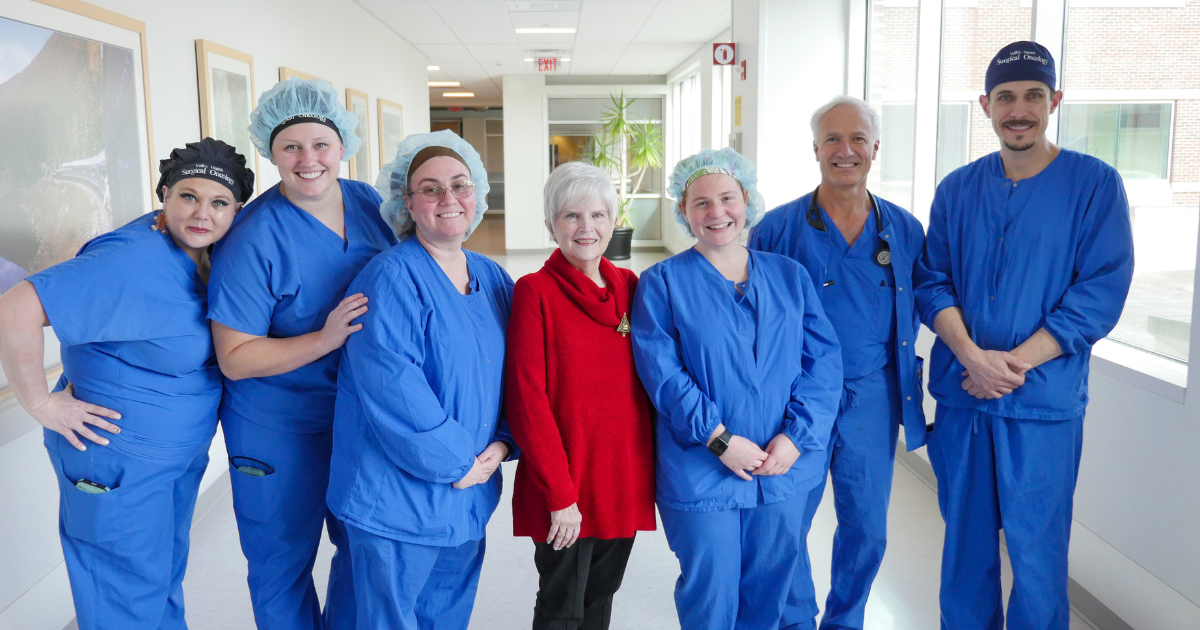Valley Health Performs First Robotic Whipple Procedures
- Category: Cancer Care, Surgical Services
- Posted On:

Surgical Team (from left): Angie Suits, CFA, Caroline Ulrich, PA-C, Tara Allen, RN, patient Nancy Albert, Nicole Rogers, RN, Ramsey Sfeir, MD, Devin Flaherty, DO, PHD. Not pictured: James Butler, CST.
Devin Flaherty, DO, PhD, performed Valley Health’s first robotic Whipple procedure in August 2022. Since then, Dr. Flaherty and the Valley Health team have completed four Whipple procedures using robotic technology.
A Whipple procedure, also known as a pancreaticoduodenectomy, is a complex surgical treatment to treat diseases of the head of the pancreas. The surgery involves removing the head of the pancreas, duodenum (part of the small intestine), gallbladder and portions of the bile duct and stomach. Traditionally, Whipple procedures are performed by hand through a large incision.
The robotic Whipple is the most recent oncologic surgery approached robotically. Most gastrointestinal oncological surgeries performed at Valley Health are completed robotically including colorectal, intestinal, gastric, distal pancreatic, and esophageal. “These procedures require an OR team of highly trained and engaged care providers dedicated to the care of our community’s cancer patients,” says Dr. Flaherty, commending the team members (pictured here) who worked with him on the first robotic Whipple procedure.
“Other than esophagostomies, a procedure to treat esophageal cancer, a Whipple is the most complicated robotic surgical oncology procedure we currently do at Valley Health.”
Using the da Vinci® Xi™ surgical system, Dr. Flaherty is stationed at a console and controls the robotic arms and movements of the small surgical instruments. An inserted video camera, which can be moved around during the procedure, gives him improved visualization.
“Not only can we complete the surgery with smaller incisions, but the robotic Whipple procedure gives the surgeon better visibility and affords gentle handling of the tissue,” Dr. Flaherty explains. “We’re able to harvest a significant number of lymph nodes during the operation, resulting in more optimal oncologic outcomes.”
Thanks to robotic surgery, most surgical oncology patients can go home in 1-2 days versus 4-6 days with traditional surgical methods. Since robotic surgery means smaller incisions, patients report less pain and post-surgery complications.
Health providers continue to lead the way in serving our community through innovative, cutting-edge care. Visit the Valley Health Surgical Oncology webpage to learn more about our team.


